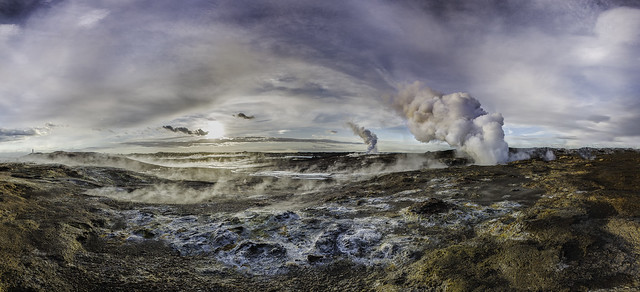 |
| Geothermal Sunsets by Sigurdur William Brynjarsson, Hafnarfjordur, Iceland. The area around Nesjavallavirkjun geothermal plant in Iceland. |
Until the 1970s, Iceland was classified as a developing country by the United Nations Development Program. For centuries it was among the poorest in Europe, a nation dominated by sheep farming, fishing, and a dirty energy mix of fossil fuel, imported oil and coal.
In the decades that followed, Iceland radically transformed its energy system to one that relies on domestic renewable sources. Today, all of Iceland's electric power is generated by hydropower and geothermal energy, and about 95 percent of the nation's heating demands are warmed by geothermal means. This was accomplished through localized, profit-driven initiatives led by communities, small villages and individual entrepreneurs.